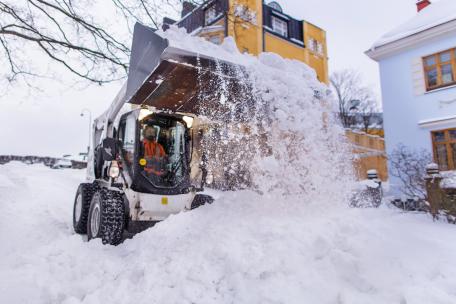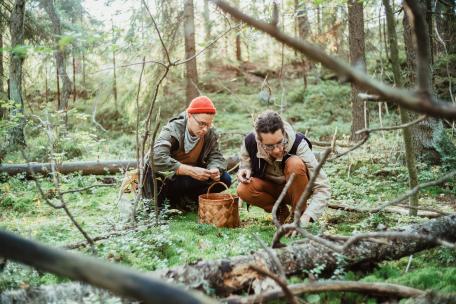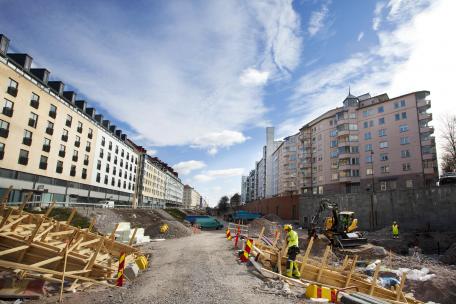Urban planning
Adaptation and preparedness for extreme weather events
Helsinki’s operational preparedness is at a good level, but adaptation and preparedness require changes in land use planning and construction and decisions on the level of preparedness.
Read more about adaptation and preparedness for extreme weather events ›
Coordination of roadworks and reduction of their negative impacts
The City has taken measures to reduce the negative impacts of roadworks, but these efforts should be continued in the future as well. For now, legislation does not support efforts to reduce the negative impacts of roadworks.
Read more about the coordination of roadworks and reduction of their negative impacts ›
The progress of urban renewal
Urban renewal is only just beginning, and so far relatively minor measures have been taken in the areas. However, efforts have been made to promote the objectives of urban renewal.
Read more about the progress of urban renewal ›
Winter maintenance of pedestrian and bicycle paths
The city has not been able to increase the proportion of people satisfied with winter cycling. Measures to improve winter conditions on pedestrian paths are only just beginning. Taking winter maintenance into account in land-use planning solutions would allow for more effective snow management.
Read more about the winter maintenance of pedestrian and bicycle paths ›
The effectiveness of recommendations
Action has been taken on 94% of the recommendations from the 2021 assessment report.
Read more about the effectiveness of the recommendations of the 2021 assessment ›
The impact of residential planning on green spaces
Residential planning has sought to preserve green spaces and valuable nature sites. However, green spaces have been designated for housing, as land-use planning also pursues its objectives for housing production.
Read more about the impact of residential planning on green spaces ›
Safety in the city’s various areas
The number of crimes committed by young people has remained relatively stable in recent years. However, serious criminal offences against persons committed by young people are on the rise. On the other hand, there has been a marked decline in police alerts for disorderly behaviour and vandalism.
Read more about safety in the city’s various areas ›
Promoting sustainable transport modes
The percentage of sustainable forms of transport has not increased. Promoting walking is very much in its initial stages and operates with limited resources.
Read more about promoting sustainable transport modes ›
Resident participation in land-use planning
The opportunities for residents to participate in land-use planning are broader than the legislation requires. Less active groups are activated if necessary.
Read more about resident participation in land-use planning ›
Promotion of biodiversity in forestry
The natural value of the city’s forests have increased in the long term, thanks to the nature management and planned exclusions from the management. The key actions promoting biodiversity were allowing forests to have moulder wood, favouring trees of different species and ages, and excluding sites recognised as important for biodiversity from the nature management.
Read more about promoting biodiversity in forestry ›
Preventing segregation of residential areas
Areal segregation has not decreased, although Helsinki has been able to curb segregation through a long-term housing policy aimed at creating a diverse population and housing structure.
Read more about preventing segregation of residential areas ›
Realisation of the accessibility policies
The accessibility of the built environment was actively promoted in the 2010s, but there is still a need to increase cooperation with disability associations. The realisation of the accessibility of the built environment according to plan should be ensured.
Read more about Realisation of the accessibility policies
›
Implementation of large-scale traffic projects
Not all large-scale traffic projects of the City have been implemented in such a way that it would be possible for them to stay within the original cost estimate or schedule.
Read more about Implementation of large-scale traffic projects
›
Managing disturbances caused by street construction sites
The City is unable to monitor the great number of worksites to a sufficient degree or intervene in operations efficiently enough in the event of issues. Disturbances caused by street construction sites are assessed by major professional construction operators, but they are only responsible for roughly half of the excavation sites within the city.
Read more about Managing disturbances caused by street construction sites
›














